The makeup designers of theatre
EXPECTATIONS VS REALITY: On the far left are reference images that makeup lead Kemper Rodi and the rest of her team used for inspiration while designing makeup looks for the character of Ariel in The Tempest. The middle image is the initial design for her makeup look, while the image on the right is the final look used in the show. These pictures show how makeup looks can change over the course of production. “While I do love my makeup looks and I do have very high expectations for them, some of those expectations are not realistic.” Rodi said. “While I was doing The Tempest, I had this huge [idea] for Ariel where I wanted Ariel completely painted white, but then we got into the process and we realized that [the concept] would be a conflict with [the other characters] costumes. So I had to basically narrow it down [and modify] the look.” (Photo courtesy of Kemper Rodi)
After over a year of being off stage, the theatre program put on their production of The Tempest in the Grotto. One aspect of the show was its use of makeup and hairstyling to help define the personalities of the characters.
The final makeup looks for The Tempest and similar productions take months of planning and preparation. From receiving the script to putting on the show, the makeup designers of the theatre department work to bring the characters to life.
The first step for the makeup team in productions like The Tempest is asking questions about who the characters are and what their style would be, such as the age of the characters and whether they would have heavy or natural makeup.
Member of the makeup team and sophomore Sam Wurts explains how those questions extend to the time and setting of the play.
“You have to look at history, look at how the style would have been at the time, [and] how they would have done their hair and their makeup,” Wurts said.
After considering these questions, Wurts and the rest of the makeup team then begins to actually design the characters’ looks using face charts or sketches of the characters’ faces and their makeup. The designers then present these face charts to the rest of the cast and crew of the show and begin to collaborate with them to bring their visions to life.
Lissa Slay, the director of the theatre program, and other tech leads give their input on the designs and consider how to improve them to best suit the production. Costume designers especially collaborate with the makeup team so that they can coordinate colors and styles for the individual characters.
Member of the makeup team and sophomore Riley Lewis details how this collaboration between the makeup team and the rest of the crew really helps a show come together.
“You have a lot [of] creative freedom,” Lewis said. “You also get to really see the director’s vision and what they are thinking about [and] it makes you feel more connected to the project.”
The next step of the process begins during tech week, which typically takes place the week leading up to a theatre production. During this week, the cast and crew prepare for the show by doing dress rehearsals and run-throughs of various portions of the show. By tech week, the makeup team has their final designs drawn out and begins to test how they actually look on the actors, taking into account their skin type and needs.
Makeup lead and junior Kemper Rodi explains the experimental process that occurs during tech week.
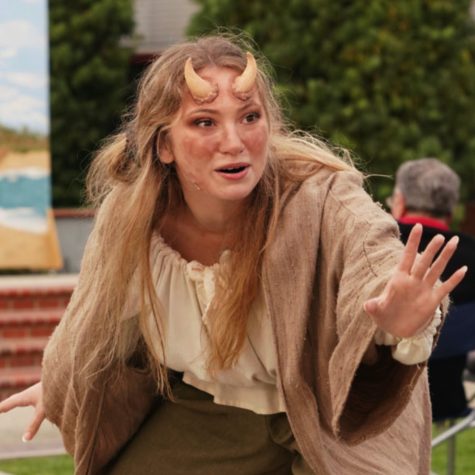
“I’m testing these makeup looks I have never actually tested on people,” Rodi said. “I’m seeing [if] this works in a timely manner. Do I need to change the mode of contour? Do I need to move the blush? Then I get to make modifications and those modifications progress through tech week.”
As tech week progresses and makeup designs are tried out, they are often revised and modified to be more practical and easier to complete on opening night.
On the actual day of the show, the makeup designers come early to do the actors’ makeup before they get them into costume. Once the makeup looks are completed, the makeup team stays backstage to do touch-ups and help with any last minute mishaps.
“While some makeup looks are very simple, it takes a lot of work and precision to get a look right. It’s definitely not as easy as it looks,” Rodi said. “I think that it is a very important department and I will fight for that.”
Your donation will support the Student Publications Department at Mater Dei High School. Your contribution will allow us to keep our equipment up to date and cover our annual website hosting costs.




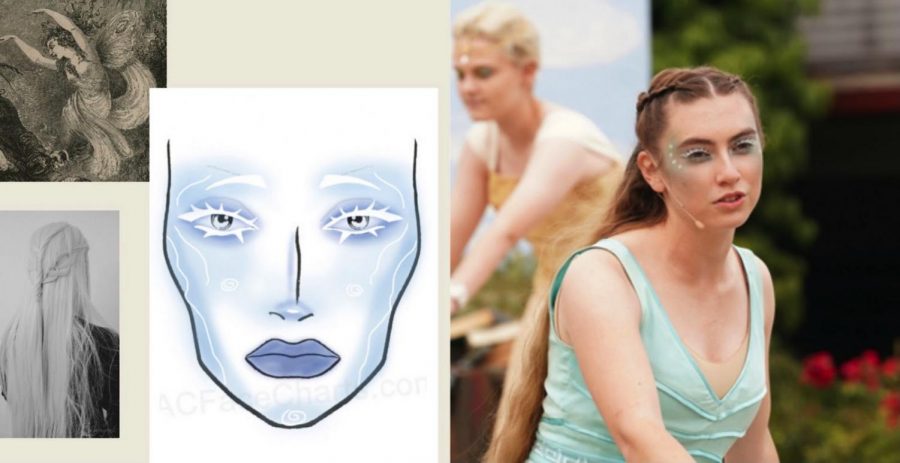
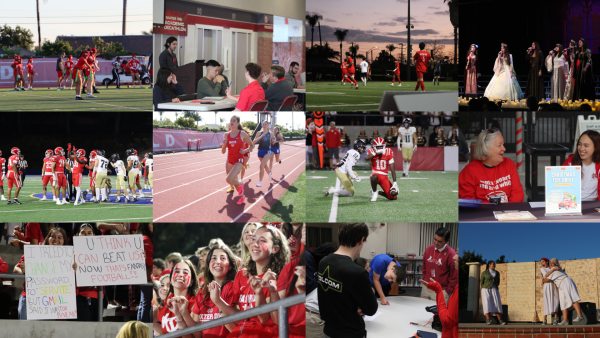

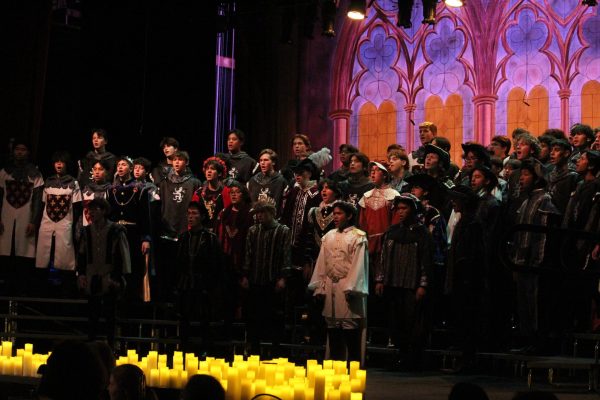
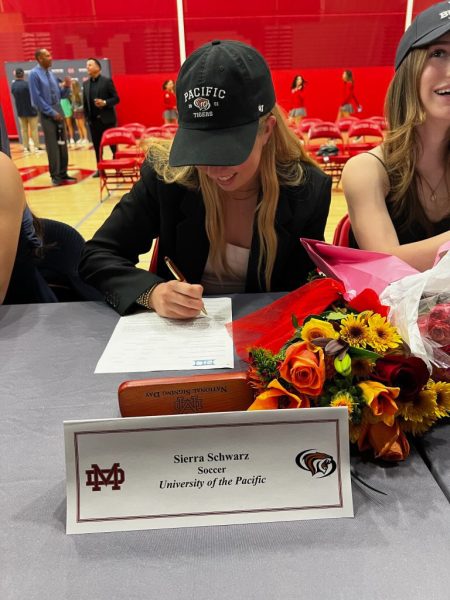
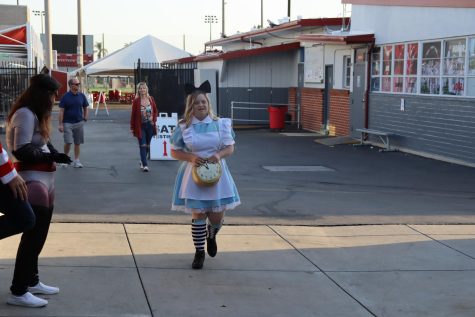
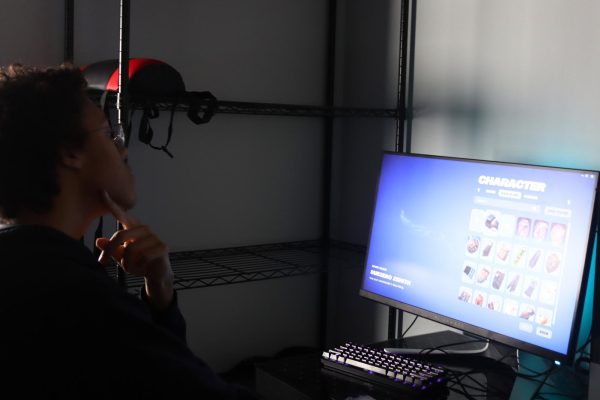
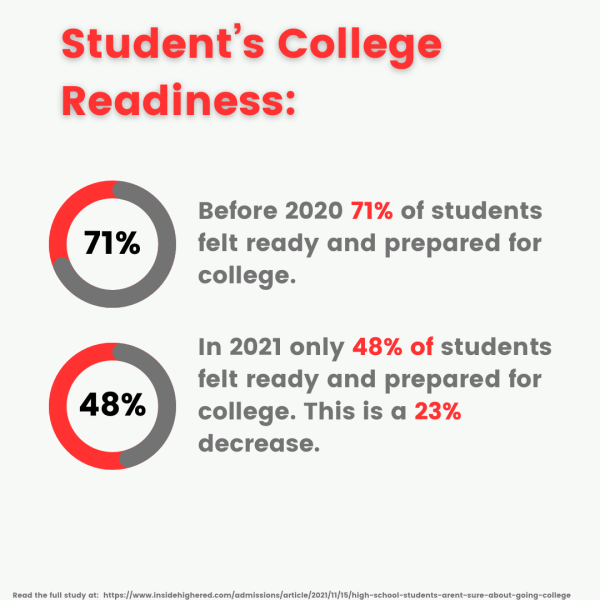



![PLAYING A ROLE: Sister Charis (right) of Heart of Jesus Retreat Center applies costume makeup for Sacred Heart Kids Club Staff for a video. Staff members are expected to participate in Kids Club events, including videos, skits, games, and other activities. These activities help the kids understand the topics being discussed, such as the seven sacraments and their purposes, and set examples for the kids. “You get to work with [people] your own age, and it’s really just tons of fun,” Sister Paula said.](https://thescarletscroll.com/wp-content/uploads/2022/03/sacredheart-475x316.jpg)
![SMILE FOR THE CAMERA: The 1988-89 yearbook shows the first Scarlet Scroll staff with their advisor, Susan Diaz. As a new publication, the newspaper staff had to put extra care into making sure what they were reporting on set a positive precedent for the paper on campus. “The administration at the time was very afraid that the Scroll would immediately turn into a format where students could just take pop shots at [them],” Gene Jimenez, a member of the 1988-89 staff, said. “And when we showed them that we could actually produce [something] as semi-responsible adults, it was a big deal.”](https://thescarletscroll.com/wp-content/uploads/2021/11/doc00617420211117152104-copy-317x475.jpg)
Kathryn • Jan 27, 2022 at 10:55 am
Very cool makeup design. Well-written article.
Roecel Sangrador • Jan 26, 2022 at 9:06 pm
This article perfectly exemplifies and shares the process behind theatre tech production of hair and makeup. On behalf of the theatre department and a proud member of the theatre ensemble, I am beyond grateful for each and every hair and makeup team that has been put together for each play at MD. The time and hard work they put into each individual face design is utterly immaculate. Kemper Rodi is truly a gift to Mater Dei’s theatre department.
Sarah Kubasek • Jan 26, 2022 at 2:37 pm
Love it!
Pablo E • Nov 30, 2021 at 12:58 pm
What a well-written article. It’s so cool to get a peek behind the scenes and recognize the work that goes into these great looks.